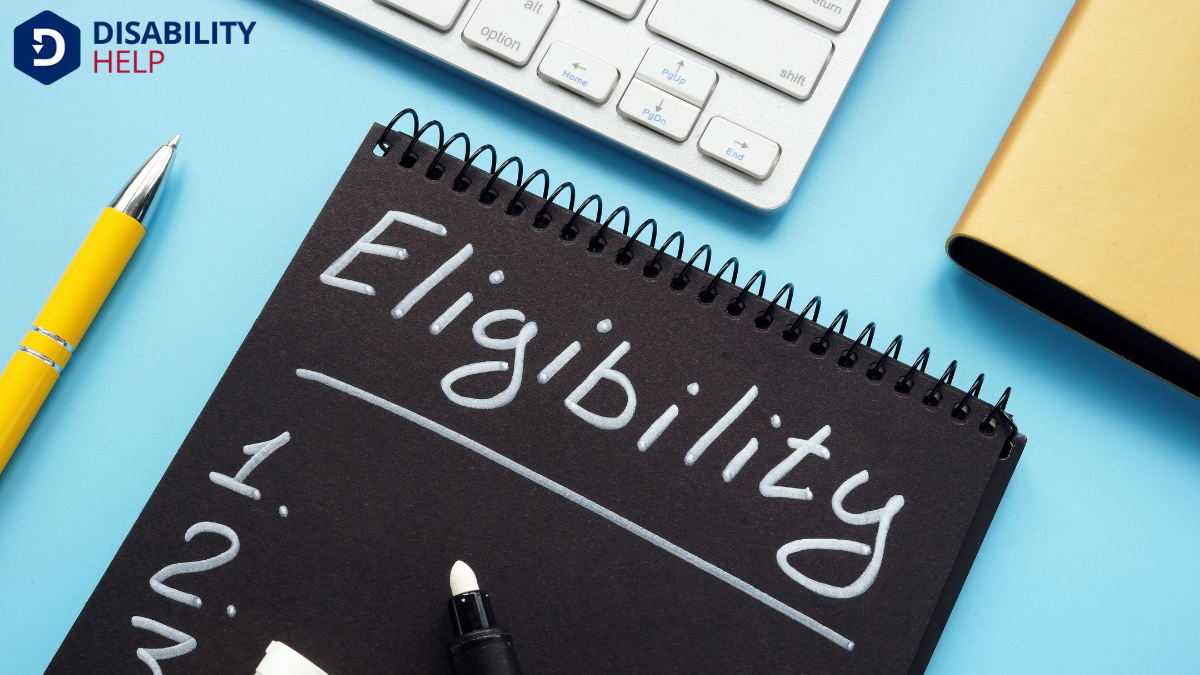We can receive short-term disability benefitsFinancial assistance provided to individuals who are unable to work due to a disability, such as Soc... while on maternity leave, but it depends on our employer's policy and state laws. Often, we must have the disability policy in place before pregnancy and meet specific work requirements. Coverage usually offers partial salary replacement during medical recovery. We should check our employer's benefits handbook and state-specific rules to understand our options. Exploring how to maximize these benefits will enhance our maternity leave experience.
Key Takeaways
- Eligibility for short-term disability depends on having a policy in place before pregnancy and meeting employment criteria.
- Short-term disability can cover pregnancy-related conditions or recovery, offering financial support during maternity leave.
- The employer's benefits policy and state laws determine if short-term disability can be combined with maternity leave.
- Benefit amounts usually replace a portion of the salary, with specific coverage duration based on delivery type.
- Coordination with FMLA can enhance support, so review employer policies and state-specific regulations for eligibility.
Understanding Maternity Leave and Short-Term Disability
When managing the intricacies of maternity leave and short-term disability, it's vital to understand how these benefits can support us during a pivotal life event. Maternity leave allows us time to bond with our newborns without the worry of work responsibilities.
Short-term disability, on the other hand, offers financial support if we're unable to work due to pregnancy-related conditions or recovery post-birth.
Combining both can be a bit complex, but it's important to know our options. We should explore our employer's policies and state laws, as they can vary widely.
Eligibility Criteria for Short-Term Disability Benefits

As we look at how maternity leave and short-term disability intertwine, understanding the eligibility criteria for short-term disability benefits becomes vital.
To qualify, we need to be aware of a few essential factors. First, we'll need to have a short-term disability policy in place before pregnancy, as most providers won’t cover pre-existing conditions. It’s important that we check our employer’s policy or personal coverage details.
Typically, we must meet specific employment criteria, like working a minimum number of hours or months before the disability event. Additionally, the medical condition must be certified by a healthcare provider as a temporary disability.
Each policy varies, so let’s verify we read the fine print. This understanding empowers us to make informed decisions.
How to Apply for Short-Term Disability During Maternity Leave
Let's explore how we can apply for short-term disability during maternity leave by starting with an overview of the eligibility criteria.
We’ll also need to gather the necessary documents, so having a checklist ready will help guarantee we’re prepared.
Once we’ve organized everything, we’ll walk through the application process step by step to make sure nothing's missed.
Eligibility Criteria Overview
Although steering through the process may feel intimidating, understanding the eligibility criteria for applying for short-term disability during maternity leave is essential.
First, let’s make sure we’re employed with a company that offers short-term disability benefits. Not all employers provide this, so checking our employee handbook or consulting HR is a good starting point.
Next, we need to meet the standard work requirements, often including a specific duration of employment before qualifying. We must also verify that our condition, in this case, pregnancy or postpartum recovery, is covered under our plan.
Finally, we should confirm our eligibility by reviewing our state’s specific regulations, as rules can vary. Being well-informed makes the application process smoother and more manageable.
Required Documentation Checklist
Getting organized with the right documentation is key to successfully applying for short-term disability during maternity leave.
We need to verify we've got everything in place to make the process smooth and efficient. Here's a checklist to guide us:
- Medical Certification: Obtain a statement from our healthcare provider confirming the pregnancy and expected recovery time.
- Proof of Employment: Gather documents like recent pay stubs or an employment verification letter to validate our current job status.
- Insurance Policy Details: Review our short-term disability insuranceInsurance that provides income replacement for a limited time when an employee is unable to work due... policy to understand the coverage and required documentation.
- Completed Claim Form: Fill out all necessary sections of the claim form accurately to prevent delays.
Application Process Steps
When we're ready to apply for short-term disability during maternity leave, it's important to follow a clear set of steps to guarantee a smooth process.
First, let's gather all necessary documents, as outlined in the previous section, to make sure nothing's missing.
Next, we'll contact our HR department to confirm the process and obtain any specific forms required by our employer.
We'll then fill out those forms carefully, double-checking for accuracy.
It's vital to submit the completed application and supporting documents promptly, as delays could affect our benefits.
Keeping copies of everything for our records is a smart move.
Finally, let's follow up with HR or the insurance provider to confirm receipt and address any questions they might have.
State-Specific Regulations and Policies
Understanding the nuances of short-term disability benefits and maternity leave requires us to explore the state-specific regulations and policies that govern them.
Each state has unique rules that may impact our eligibility and benefits. Here are four key aspects to evaluate:
- State-Mandated Programs: Some states, like California and New Jersey, have their own disability insuranceA form of insurance that provides income to individuals who are unable to work due to a disability. programs that provide benefits during maternity leave.
- Eligibility Criteria: States differ in the criteria needed to qualify for benefits, such as employment duration or earnings thresholds.
- Benefit Duration: The length of time benefits are available can vary, often aligning with state mandates.
- Benefit Amounts: The amount paid may depend on a percentage of our wages, subject to state-specific caps.
Knowing these elements helps us navigate our options effectively.
Employer-Sponsored Short-Term Disability Plans

Let's explore how employer-sponsored short-term disability plans can support us during maternity leave.
These plans often provide vital coverage, but it’s important to understand the eligibility and enrollment requirements.
Coverage for Maternity Leave
Although managing maternity leave can be complex, employer-sponsored short-term disability (STD) plans often provide valuable assistance.
These plans can help ease the financial burden during this period by covering a portion of our income. Let’s explore how they typically work:
- Coverage Duration: STD plans usually cover a set period, often 6-8 weeks, depending on the type of delivery.
- Benefit Amount: They often replace a percentage of our salary, usually around 50-70%.
- Waiting Period: There might be a waiting period before benefits kick in, often a week or two.
- Coordination with Other Benefits: Plans might coordinate with Family and Medical Leave Act (FMLA)A U.S. law that provides eligible employees with unpaid, job-protected leave for family and medical ... benefits to guarantee we receive the most extensive support possible.
Understanding these elements helps us navigate maternity leave with confidence.
Eligibility and Enrollment Requirements
When considering employer-sponsored short-term disability plans, it’s important to understand the eligibility and enrollment requirements. First, we must verify if our employer offers such a plan and whether we're eligible. Typically, eligibility depends on factors like employment status, tenure, and work hours. Most employers require us to be full-time employees who've completed a certain probationary period.
Enrollment often happens during specific periods, like open enrollment or upon starting a new job. It’s vital to enroll during these windows, as missing them might delay coverage. Additionally, some plans may require medical underwriting, which can affect approval.
Let's make sure we review all requirements and deadlines, so we don't miss out on potential benefits while on maternity leave. Understanding these details helps us secure the support we need.
Financial Planning for Maternity Leave
Planning financially for maternity leave is essential for ensuring a smooth shift during this significant life change. We need to take proactive steps to secure our financial stability while we're temporarily away from work.
Here’s a structured approach to reflect upon:
- Budgeting: Assess our current expenses and identify areas where we can cut back. This helps us manage our finances more effectively during leave.
- Savings Plan: Start setting aside funds as soon as possible. Establishing a dedicated maternity leave savings account can provide a financial cushion.
- Understand Benefits: Review our employer’s maternity leave policies and any applicable short-term disability benefits, ensuring we're aware of our entitlements.
- Healthcare Costs: Anticipate medical expenses related to childbirth and postnatal care, so we're not caught off guard financially.
Common Challenges and Tips for Navigating Benefits
Maneuvering the landscape of maternity leave benefits can indeed feel overwhelming. We often face challenges like understanding eligibility requirements and grappling with confusing policy language.
It’s essential to start by thoroughly reviewing our employer’s benefits handbook and asking HR for clarification on any unclear points.
Let’s not forget to explore state-specific programs that might offer additional support. Staying organized by maintaining a checklist or timeline will help guarantee that we meet necessary deadlines for applications and documentation.
We should also connect with others who’ve navigated this journey to gain insights and tips.
Finally, let’s keep copies of all documents and communications for our records. By taking these steps, we’ll be better equipped to secure the benefits we’re entitled to.
Conclusion
In maneuvering maternity leave and short-term disability, we must be proactive and informed. Let's verify we comprehend our eligibility and the application process, keeping in mind state-specific regulations and employer-sponsored plans. It's essential we plan financially and anticipate potential challenges. By staying informed and prepared, we'll maximize our benefits and support during this important life change. Remember, we're not alone in this journey; resources and support are available every step of the way.






